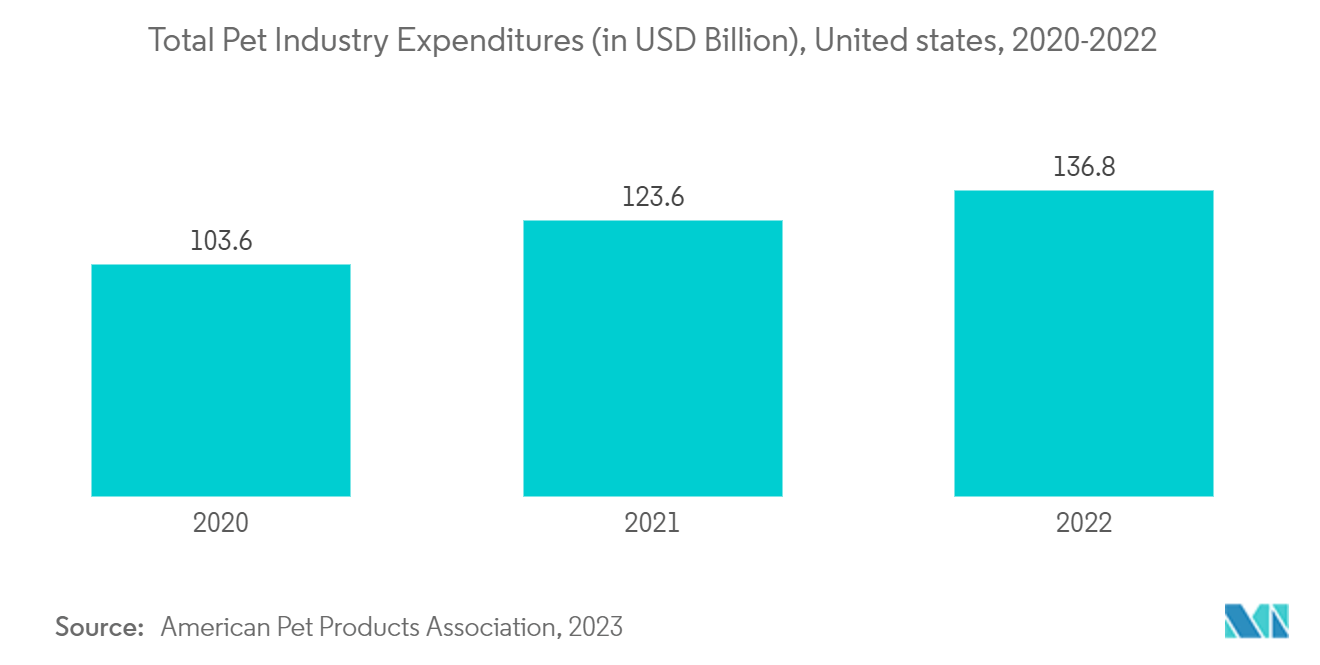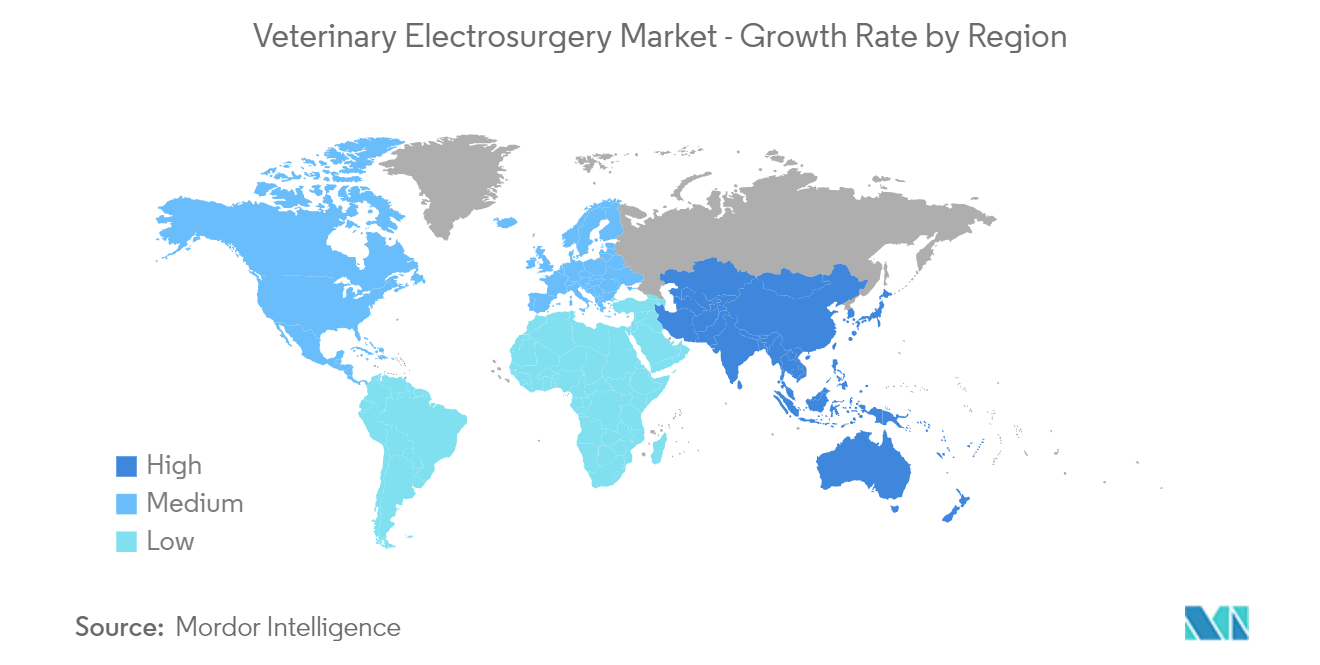Market Trends of Veterinary Electrosurgery Industry
Small Animal Segment is Anticipated to Witness Significant Growth Over the Forecast Period
Electrosurgery is utilized in a wide range of surgical procedures for small animals, including soft tissue surgeries, tumour removals, dental procedures, and wound management. As veterinarians increasingly recognize the benefits and versatility of electrosurgery, the demand for electrosurgical devices for minor animal procedures continues to grow. The small animal segment in the veterinary electrosurgery market is expected to register significant growth during the forecast period owing to factors such as the increasing adoption of companion or pet animals globally, surging focus on pet healthcare, and rising prevalence of cancer.
The number of small animal adoptions worldwide will drive segment growth during the study period. For instance, according to the data released by the European Pet Food Industry Federation (FEDIAF) in July 2022, approximately 91 million or 46% of the European Union households own a pet. As per the same source, as of 2022, there were 127 million cats, 104 million dogs, 53 million birds, 29 million small mammals, 22 million aquaria, and 11 million reptiles owned by people in Europe. Thus, many European households owning small animals, such as dogs, cats, rabbits, and small mammals, are set to drive the demand for veterinary services, including electrosurgical procedures, during the forecast period. In addition, the high prevalence of cancer amongst small animals is also likely to drive segment growth during the forecast period. For instance, according to an article published by the Aging and Cancer Journal in February 2022, approximately one in four dogs will be diagnosed with cancer once in their lifetime. Therefore, the high prevalence of cancer amongst dogs is projected to drive the demand for electrosurgery devices for tumour removal procedures. Similarly, the research article published by Nature Journal in October 2021 stated that when the research was conducted in collaboration with a group of scientists from the United Kingdom and Spain, cancer was found to be a major reason for veterinary consultation in the United Kingdom. Especially in companion animals' cancer was found to be more prevalent. Thus, removing tumours or cancer cells is necessary, which requires electrosurgery.
Hence, the high adoption of small animals and the increasing prevalence of cancer amongst animals is projected to drive segment growth during the forecast period.

North America is Expected to Register Significant Growth Over the Forecast Period
The geographical analysis of the Veterinary Electrosurgery market shows that North America holds a significant market share in the global market. This is due to the rising animal adoption, a rise in insured pets, and increasing per capita animal healthcare expenditure.
The pet industry in the United States is vast and is also expected to increase the demand for veterinary electrosurgery devices and consumables over the forecast period. For instance, per the data published by the American Pet Products Association's 2023-2024 National Pet Owners Survey, over 46.5 and 65.1 million households in the United States own cats and dogs, respectively, in 2023. Thus, the country's high adoption of cats and dogs is projected to accelerate the demand for veterinary electrosurgery devices during the forecast period. Furthermore, according to the data published by the North American Pet Health Insurance Association, Inc., in May 2023, the total premium volume for pet insurance in the country was USD 3.2 billion. The total number of pets insured in the country at year-end 2022 was 4.8 million, a 22% increase since 2021. Moreover, recently, companion animal or pet ownership has been increasing in other countries in the region, such as Canada and Mexico. The data published by 'Pet Keen' in May 2022 shows that an estimated 38% of Canadian households own a cat, while 35% own a dog. Also, the source mentioned above estimated that pet owners in Canada are spending more money on their pets than before. As per the source mentioned above, 17% of pet owners in Canada are willing to spend more than USD 500 every year for their pet healthcare.
Therefore, the increasing pet adoption and high demand for pet insurance in the region are projected to drive the growth of the studied market in the North American region during the forecast period.


